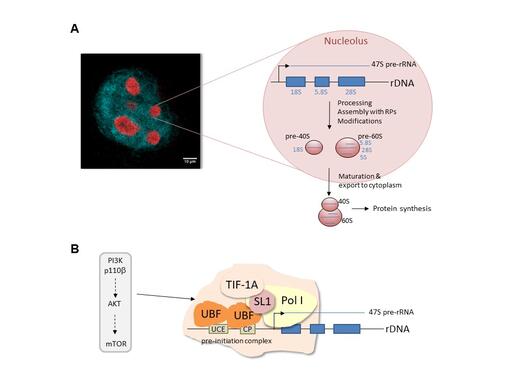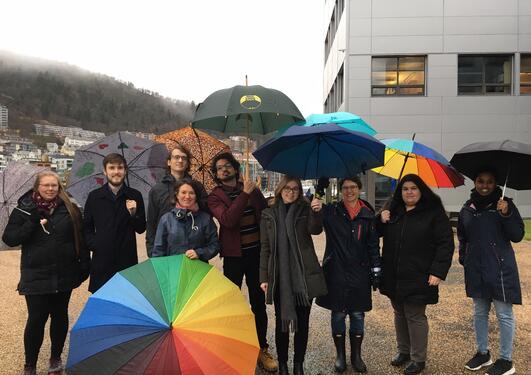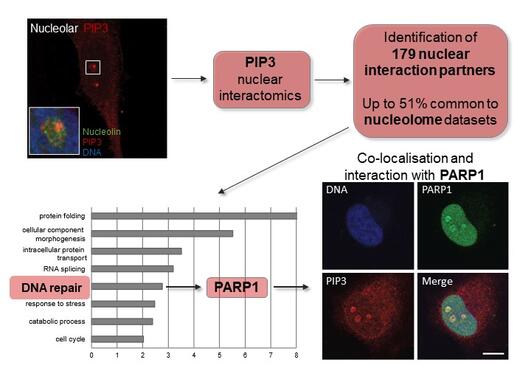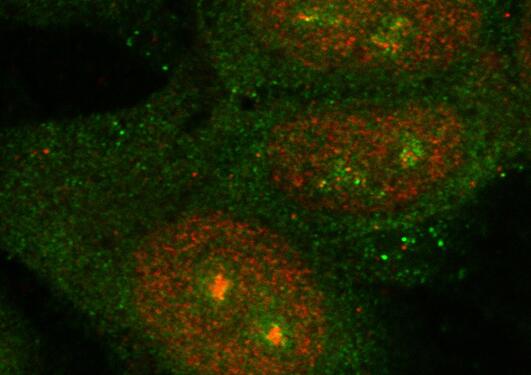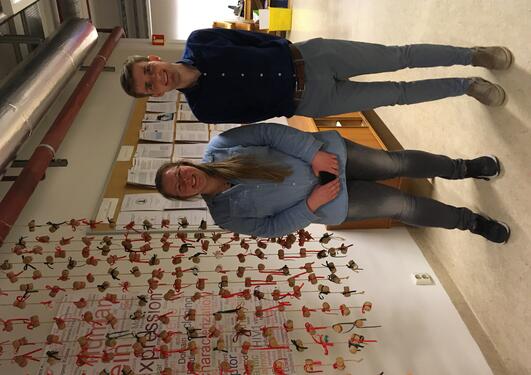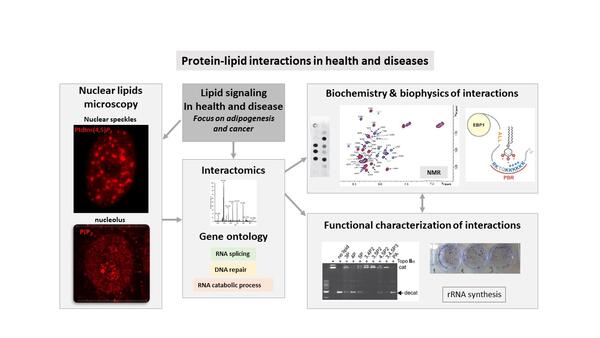
AE Lewis group
Lipid Function in the Nucleus in Health and Diseases
Lipids are essential for life. They are structural components of all cellular membranes but also function as energy stores, cellular signalling molecules, hormones and regulators of transcription factors. Recent lipidomics analyses in mammalian cells have highlighted the dynamic remodelling of different lipid species in health and diseases.
Our group studies the roles of the signaling lipids, phosphoinositides, in the nucleus using quantitative interactomics, as well as biochemical, molecular and cell biology approaches in the context of cancer biology.
Lipids in the nucleus: what are they doing there?
The signaling lipids phosphoinositides (PI) are found within the confine of the nucleus but their roles remain unclear. To fill this gap, our lab has mapped protein-PI interactomes formed in this organelle (PMID: 21048195 & 34048982) and aim to identify altered networks in pathologic states for which the PI metabolic pathways are known to be altered, particularly in cancer.
Our group is therefore interested in addressing the following questions:
1. What are the functions of these interactions?
3. Which protein-PI interactions are functionally disrupted in cancer and contribute its development?
To learn more about nuclear PI and PI interactomes, check our reviews on "Polyphosphoinositides in the Nucleus: Roadmap of Their Effectors and Mechanisms of Interaction" and Phosphoinositide 3-kinase signalling in the nucleolus.
Group Members
Aurélia E LEWIS - Group leader, research profile in ResearchGate, and UiB.
55 58 45 21
Diana C. Turcu - lab manager
Bachelor students
Location: Lab 2
Høyteknologisenteret i Bergen, Bioblokken, 5th floor,
Thormølensgate 55, 5008 Bergen, Location
